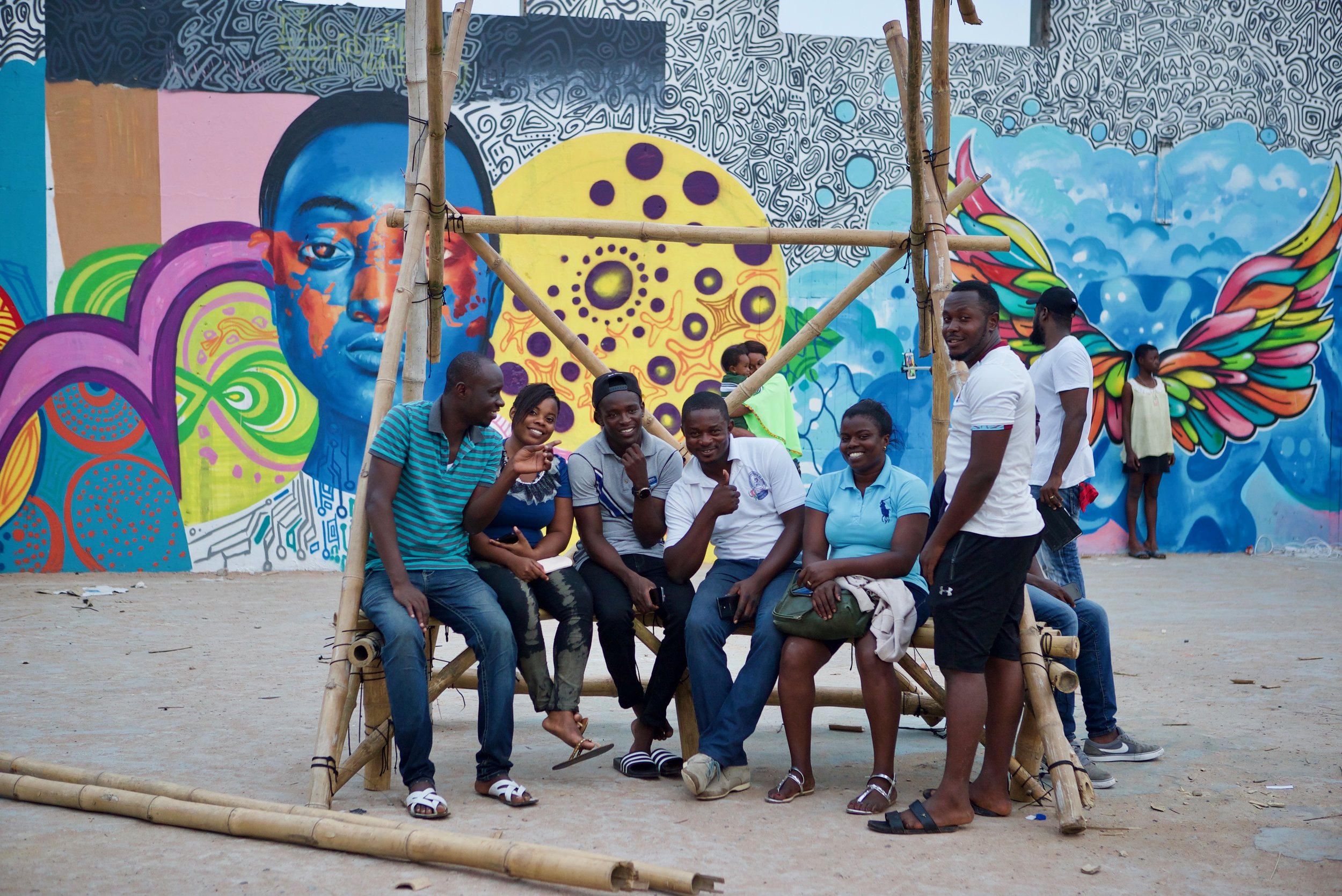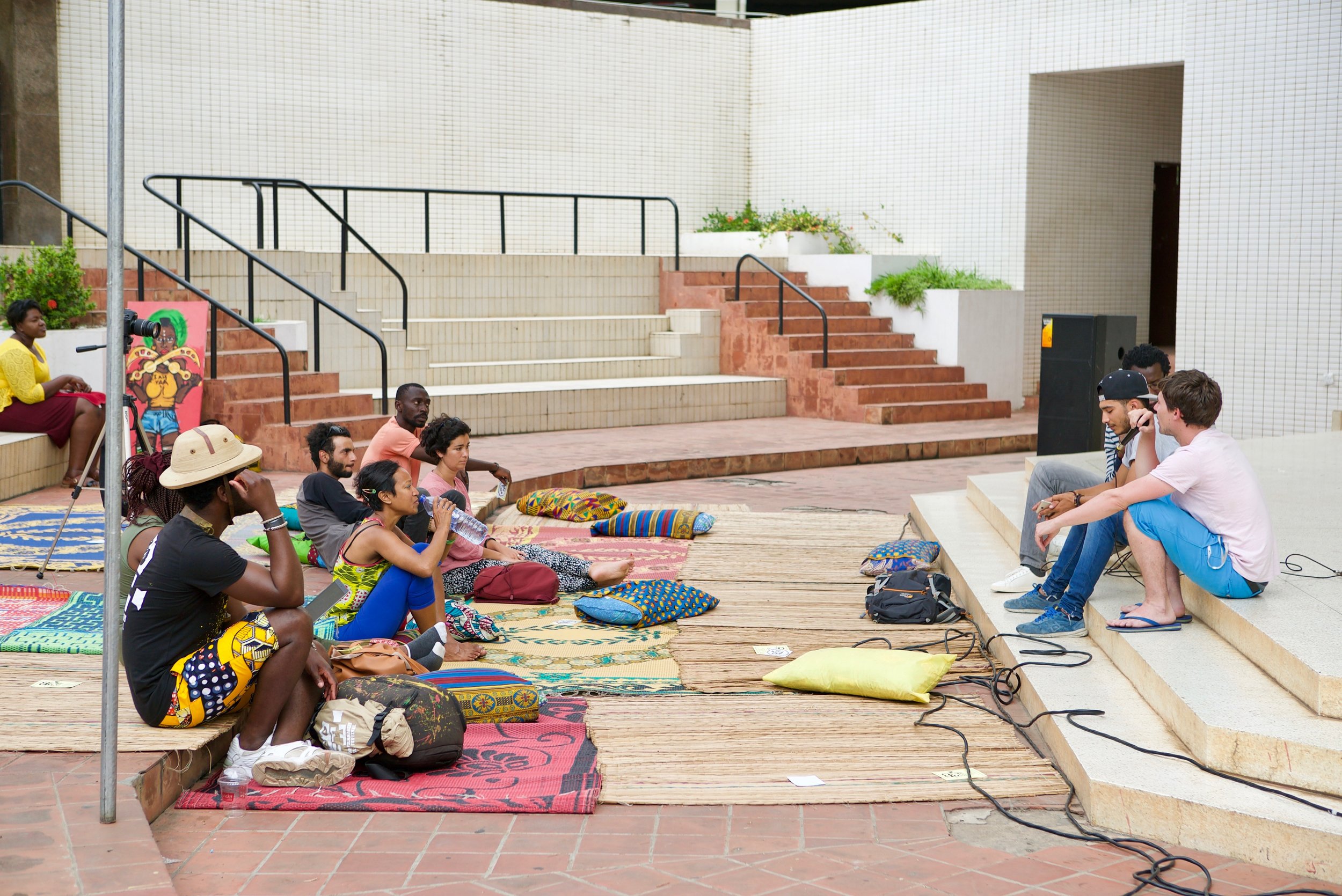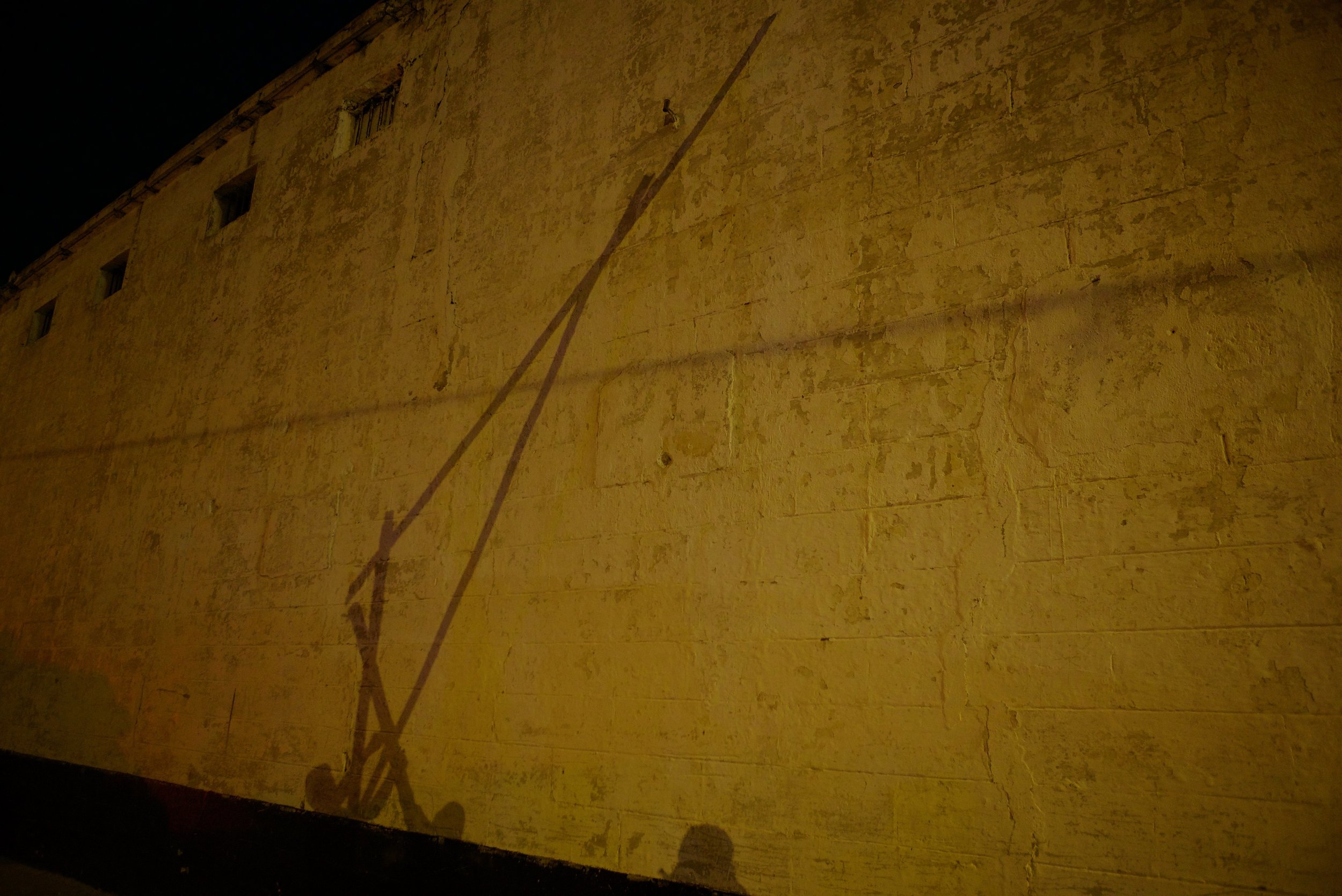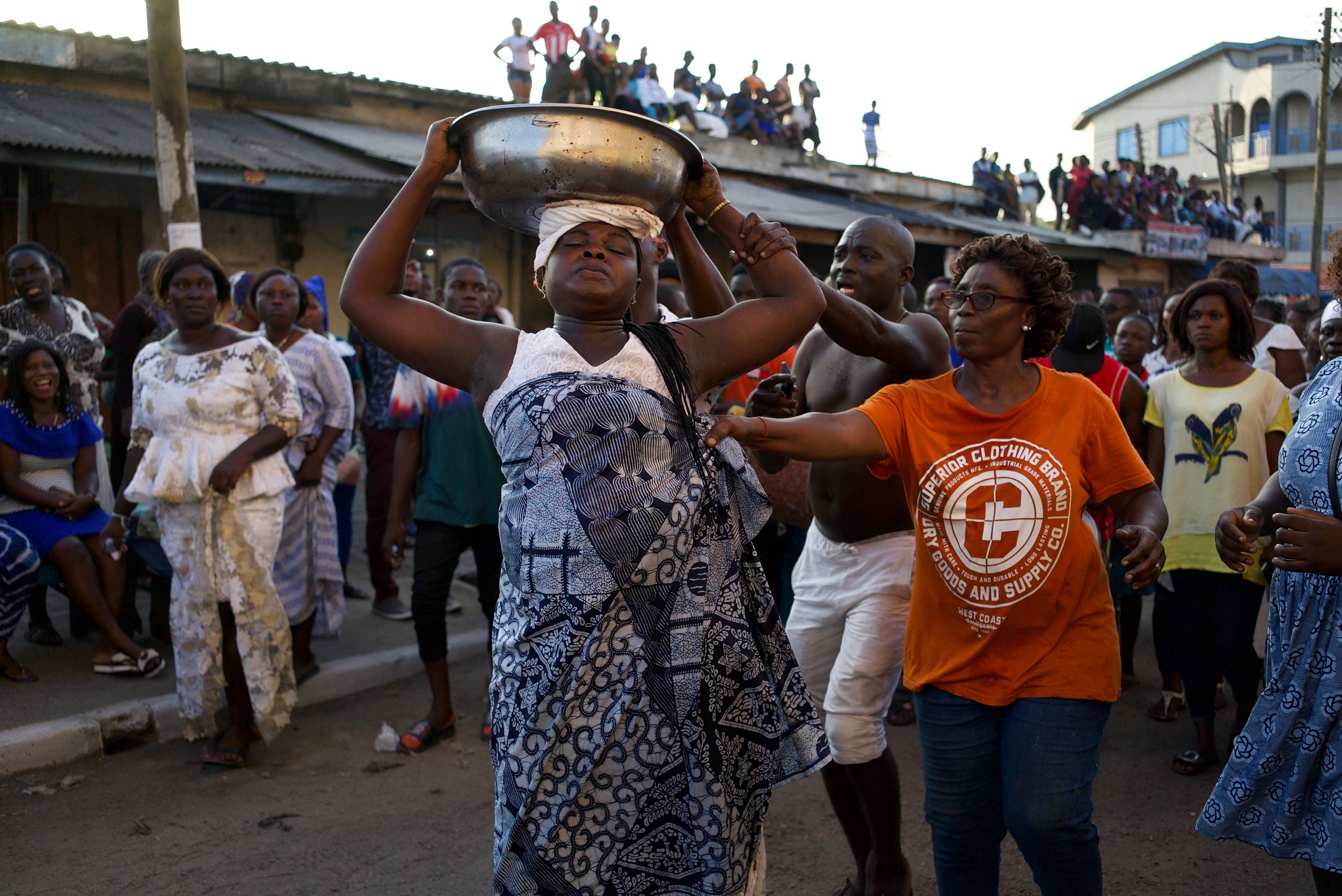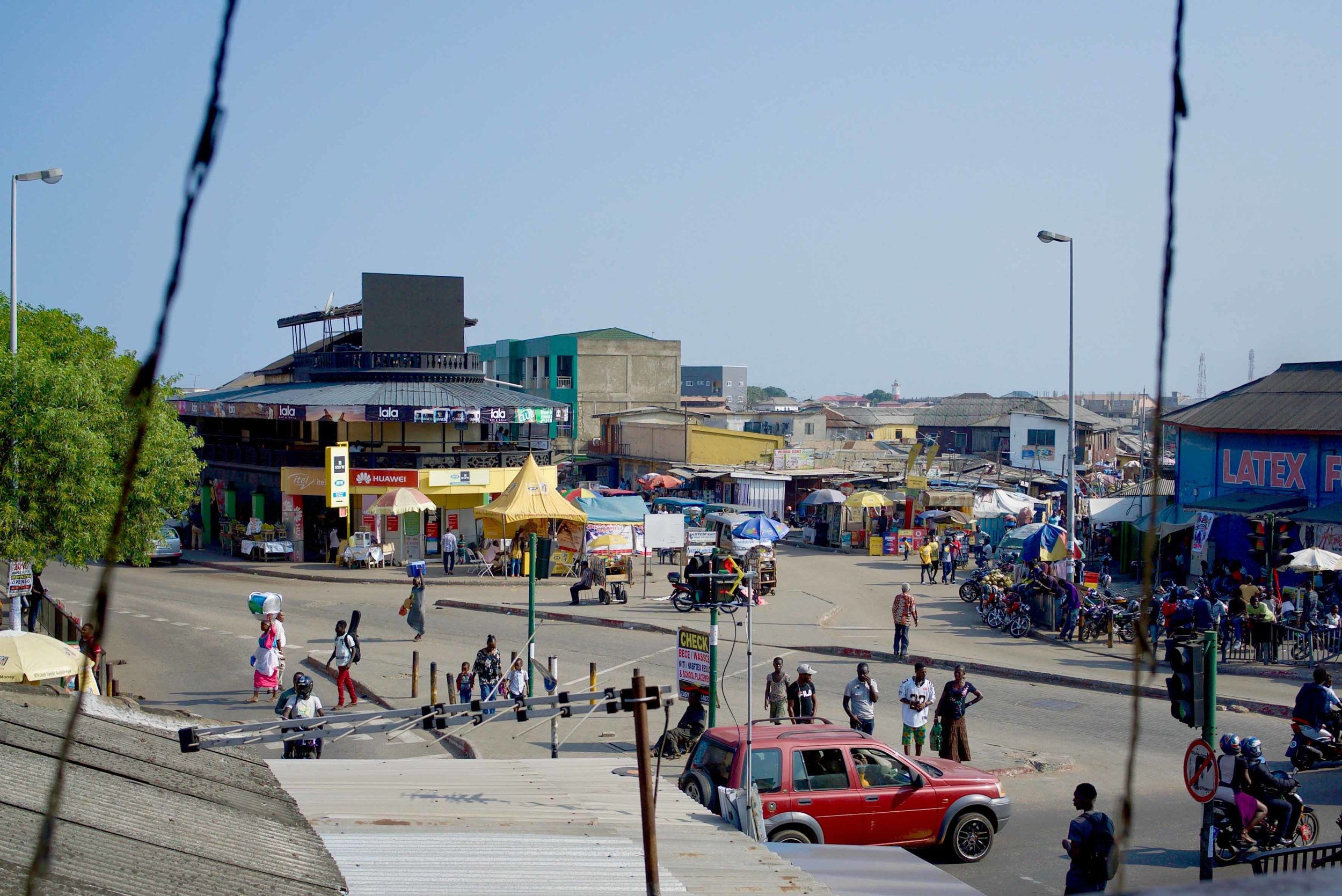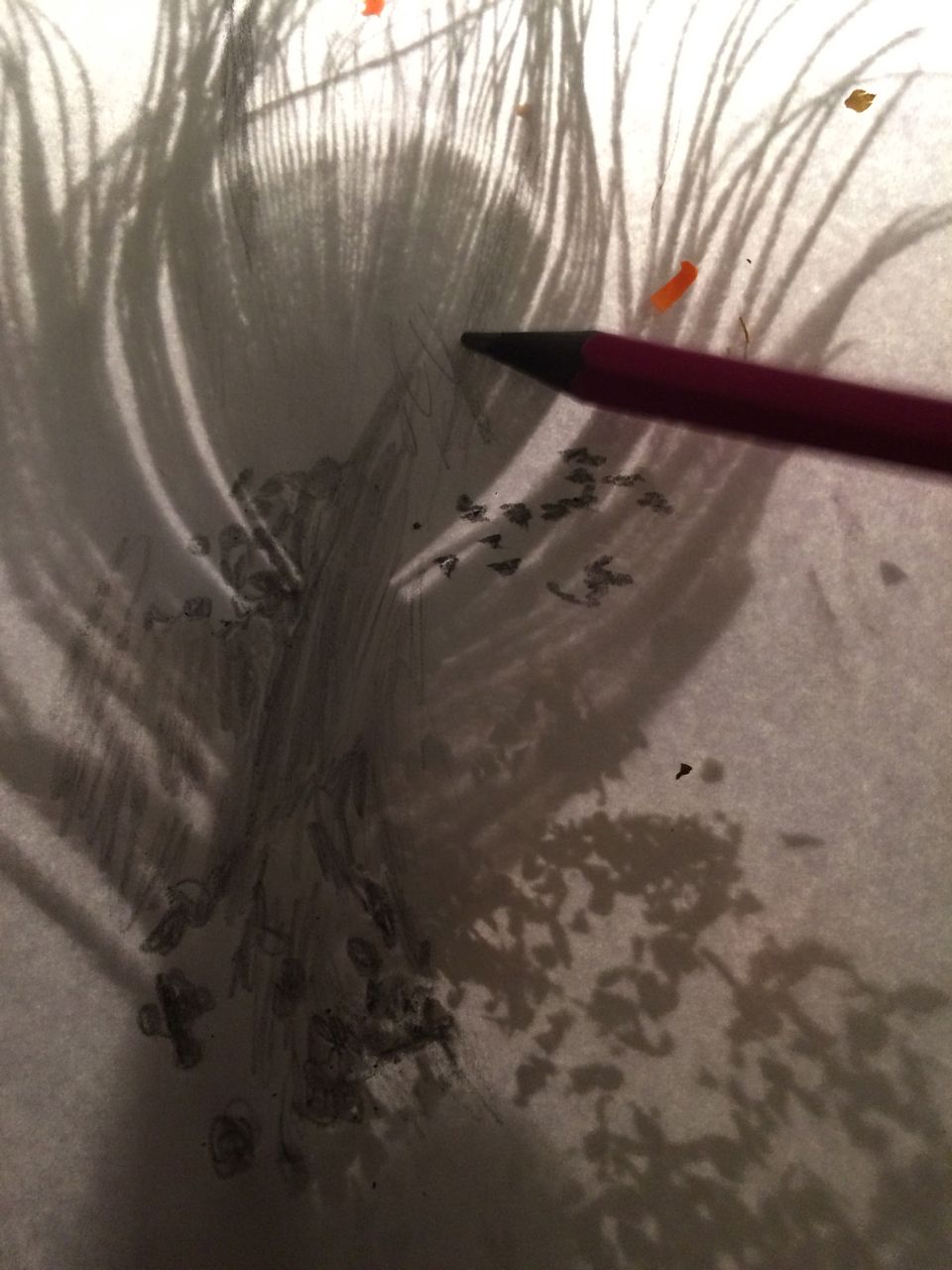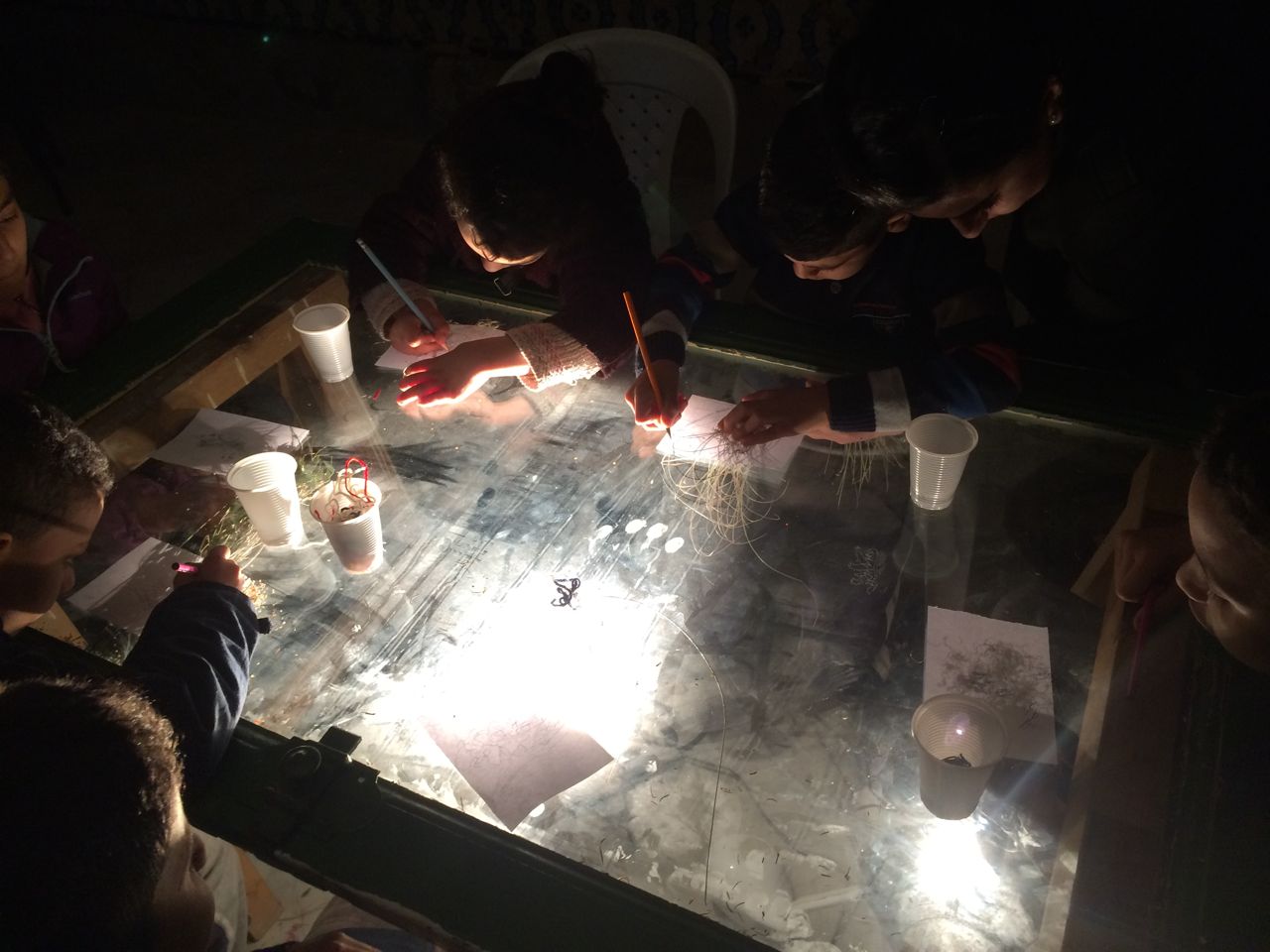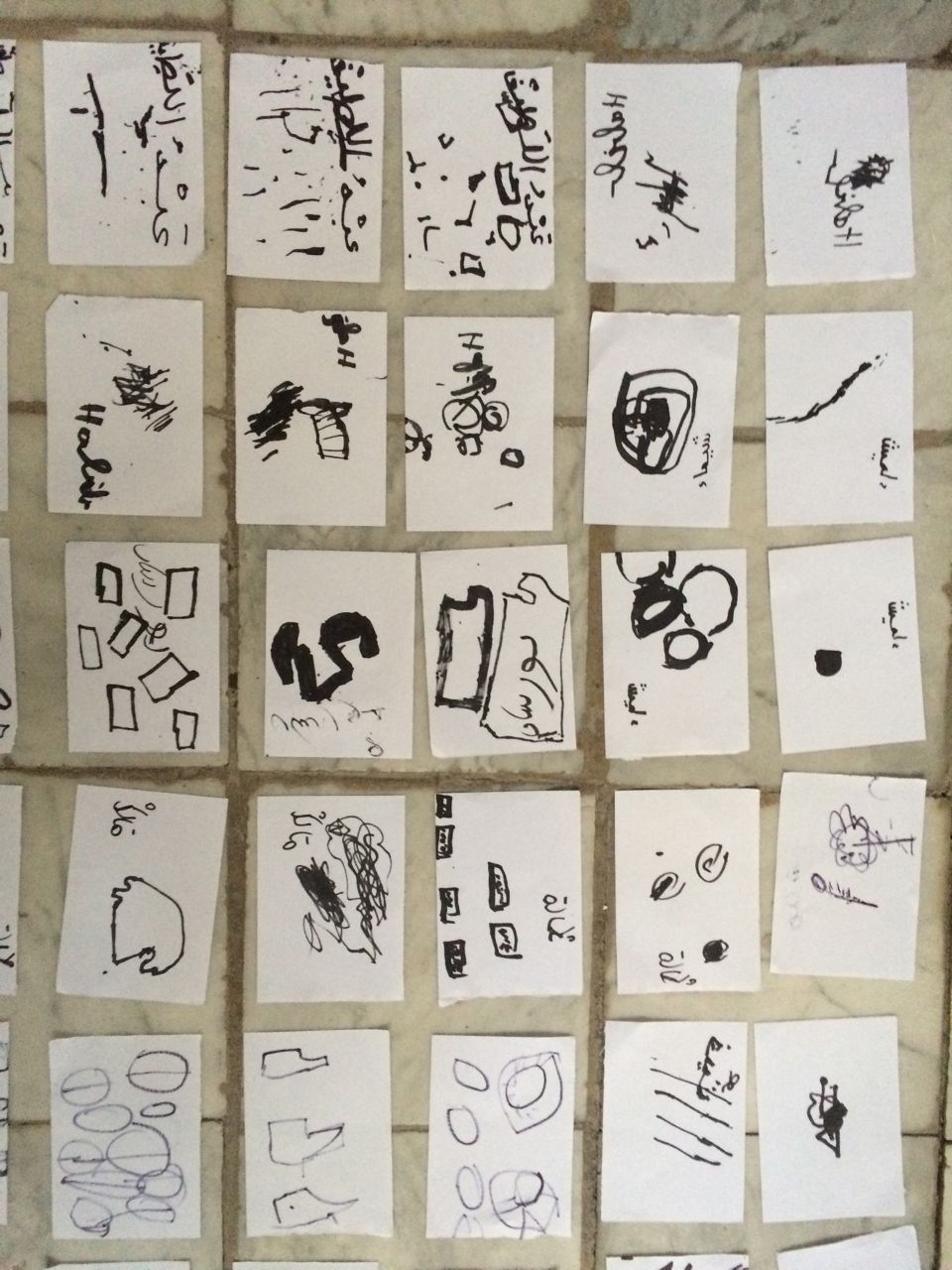Let the festival weekend begin! Last night we left Old Kingsway feeling tired but happy after a week of hard work. The installation, though, didn’t seem like it had reached its full potential yet: we all wished we could have had a couple more days to try different positions for the structures and for the LED lights, and to continue building on what we had found. At this stage though we just had until 2pm – when the festival was to officially kick off – to try and improve what we had made, keeping in mind that one of the key objectives we had set ourselves for this work was to create a space that would encourage encounters between people. One issue we saw with our installation as we had left it last night was that all of a sudden by adding the lighting onto the structures they seemed smaller and more purely “functional” than we had hoped. When the structures didn’t yet have lights hanging from the top bamboos they seemed much bigger, they had a more powerful presence, and they looked more abstract and less simply practical. The bamboos shooting off in different directions towards the sky gave the installation an openness and a level of abstraction that made them more open ended and awe inspiring, which made the installation on the whole something more than just interesting looking benches in the round. The challenge of El Warcha’s work is often to start from an ordinary day to day object and revisit it to get somewhere else, in this case tending towards a micro-architecture. But with the LED lights hanging from the top bamboos, as opposed to the structure feeling open and expansive, we were brought back down to earth, as the lights were hanging downwards and lighting the space below, instead of extending outwards as the bamboos had previously done. We therefore tried to find a solution to maintain the cosy and inviting atmosphere on the lower levels of the installation around the benches, while still trying to maintain the airiness and expansiveness of the broader installation, making it appear interesting also from afar.
To this end, Ben went to Old Kingsway early in the morning, followed by Aziz a bit later, to move half of the bamboo-cased-LED-lights off from the top bamboos. He hooked them instead at the bottom back of the structure, below the benches, so as to allow the lights to create big shadows on the walls and to create more texture in the bamboo by lighting it from different angles. This was a good move: it made the lighting cluster in the centre neater, it freed some bamboos at the top for them to continue tending upwards, and it made the whole installation more interesting by allowing the lighting to give it movement. TV5 Monde interviewed Ben and Aziz working at these final adjustments – Aziz (who is our youngest member, 16 years old) felt proud to have been cited as a designer in an article that later came out of this interview.
For the rest of the team it was a bit of a slow morning, catching up from yesterday’s exhaustion. Nao and Valentina seized the opportunity of a free morning before the festival to go to Osu and check out Nigerian and Ghanaian fashion at the “Elle Lokko” boutique, where they met up with Dagna, and then took a taxi to La Township to see Serge Attukwei Clottey’s installation. Before heading into the neighbourhood where the installation spread through the narrow streets and houses, we checked out the Artists Alliance Gallery, where loads of works are exposed alongside each other, with no apparent curation, but with a lot of energy – it feels almost overwhelming to walk through so many works on display in this three-storey building by the ocean.
Serge’s studio is also his family home and, for the purpose of today’s exhibition, it was easily findable by following a “carpet” on the main dirt path of La Township made of yellow and orange plastic squares sown together with metal that lead into his lane. Along this yellow plastic carpet, houses, walls and windows were also covered in multi-coloured plastic that created an almost textile quality, as if they were covered in blankets. In his studio hang large square and rectangular assemblages of plastic – those made from plastic tanks from the back looked like animal skins. Several men were walking around with earrings and with square bits of yellow plastic braided into their hair. Photos printed on A4 paper were glued onto the walls of houses. There was a waterfall of yellow plastic flowing into the open-sewers. Serge was meant to activate the space through a performance. We waited almost an hour for this activation, expectation building and falling rhythmically throughout the wait. We had to go before Serge started – Silvia, an art curator working in Canada we met a couple of days back through Nao – later told us that he only got going at 1pm. Good thing we didn’t wait, since Chale Wote called us to make sure we’d be by our work in Olds Kingsway at around 2pm for the President’s visit.
On our way back to James Town all five of us squeezed into a taxi – at a traffic light another driver shouted out his window at ours: “you should send yourself to the police station: overload!” We passed by advertisements for different churches and banks, posters with pictures of women nominated for best teacher of the year, a billboard saying “More kicks than Jackie Chan – Watch Premier League for free”. We ask the boys what they miss most about Tunisia, now that our journey is almost over and they are about to go back home. “ummi”, “dog”, “pigeons”. Yusif: “everything”. And where shall we go next? Yusif again: “Tokyo”.
When we get to James Town, Chale Wote is in full swing and the streets are packed – it is also possibly the hottest day since we got here. Never seen so many people at an art festival, the mood is more that of a carnival, with people coming to walk through the main street of the festival very well (and, some, eccentrically) dressed for the occasion, and clowns and men on stilts parading up and down. We need to watch out as we walk slowly through the crowd not to lose each other, and we also need to stay alert to avoid getting run over by the biker policemen who are dividing the crowds to make way for the president’s car: he is coming. We walk past groups huddled around children boxing (like the other day in Old Kingsway), an arm-wrestling stand, myriad food and souvenir/artisans’ stands selling jewellery, fabrics, bags, dresses and more, improvised artists offering to do face paint for passers-by or painting children all white (the latter idea might have been inspired by a performance art stunt from previous Chale Wote editions, revisited and repurposed this year to ask journalists and obroni for money for taking pictures of the white-painted children). Everything and everyone could be art.
We were almost in James Fort when the president finally arrived, closer to 5pm than 2pm. We couldn’t enter the fort to see the performances scheduled to be happening there then because it was shut off for the president, so we went to the Mantse’s palace’s field (entrance through two lion statues) where a “cook off” open air food hall had been organised, and where a big stage had emerged with live music. We found red velvet pancakes and ate several. And so it was that we ended up missing both the president and the performances, but the guys didn’t: Mohammed, Hedi and Lotfi saw him and even sang a song of dissent in Arabic as he was passing by (unclear why). One of the festival organisers told us that the security men of the president had gone to Brazil House before his arrival and had tried to censor some of the art on display which comprised of photos of transsexual persons. The curators politely declined to take the art down, and managed to stand their ground. As we were making our way through the crowd back to Old Kingsway a journalist stopped Valentina and asked: “Is this your first time at the festival? Do you believe in love at first sight?” After having checked out the vibe around our structure, as we were walking towards the James Town post office, two pick-up cars filled with people wearing red t-shirts with a man’s face on them, one of the cars carrying a coffin, passed by heading at full speed in the direction of Old Kingsway. It was a funeral that decided to join the festival.
We escaped the intenseness of the festival for a while to go to an exhibition opening at the Kempinski Hotel, at the “Gallery 1957”. The exhibition was called “Dreams from the Deep End”, by artist Modupeola Fadugba, and was inspired by research with a team of elderly swimmers in a public swimming pool in Harlem, New York. Some of the work was film material – our favourite part – while some of the paintings were more figurative, others more abstract. Some of the paintings were burnt in various points. Yusif felt that meant the broken hopes of the swimmers, Nao saw in it only decoration, Dagna read it as fate and vanishing, like water which comes and goes, this is what the burnt paper evoked for her. The exhibition opening was in a lavish building, and was populated by hipster types, some wearing Thomas Sankara inspired revolutionary berets, others in fancier dresses. We gorged on the generous reception offering sushi, small pizzas, Asian inspired canapés, ice cream, and the open bar serving Mohitos and Manhattans, only to then also decide head to dinner Chez Clarisse. There we joined tables with the “curators on safari” (their words) who had been invited by the owner of the Kempinski to attend this exhibition, Serge’s installation this morning, Chale Wote, and to give talks and meet different West African artists. This art world seemed quite detached and different from the one we had been in touch with during Chale Wote, another world to the one of wall painting in James Town and engagement with inhabitants that the festival promotes.
We went back to Old Kingsway at around 11pm to check out the vibe around our installation and found it in darkness – our LED lights were off. We asked a cleaner sweeping the floor around our structures what had happened, and he explained that he wanted to clean but people were sitting on the structures and not wanting to leave, so he just decided to cut our wire. He told us not to worry, that he’d fix it for the next day, but we explained that the whole point of the installation was for people to enjoy the space below it at night as well. As we assessed the damage, worrying that we’d have to buy another domino or rewire the entire structure (which had taken us hours of work perched on top of the scaffolding seen the size of our installation), Kwaku came to the rescue. He turned off the electricity first, and then managed to tie back together the live wires that had been cut and that had until then been lying dangerously on the ground. He agreed that it was a shame that our wire got sectioned, the point of the festival is for people to enjoy these spaces and the art, the man could have just asked him or the boxer (our electricity provider) to turn off the electricity instead of going ahead and sectioning our wire. By the time we left, hamdullah, the sweeping work was over, and the LED lights were back on, James Town still buzzing.















